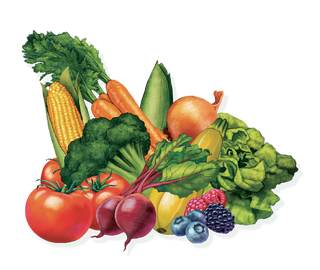Growing Tomatoes: Tomato Care Tips

Tomatoes are the edible berries of the tomato plant (Solanum lycopersicum). With over 10,000 varieties of tomato, this summer fruit (yes, it's a fruit!) is one of the most popular plants for both gardening experts and beginners to grow in their personal gardens.
A Brief History of the Tomato
The early, wild versions of tomatoes are thought to have originated in Central and South America, mainly in pre-Columbian Mexico, Peru, and Ecuador. Their roots can be traced to the Aztec people who would grow and harvest them as early as 700 A.D.
Tomatoes come in all shapes, sizes, and colors. They can be eaten raw, cooked, pickled, or pureed in the form of sauces. The majority of the tomatoes that are planted, however, are processed into products like tomato juice, canned tomato sauce, ketchup, and more. One of the many reasons why tomatoes are used in so many versatile ways is because they're easy to cultivate due to their vigor and hardiness. In this guide, we'll go into the best ways to plant, grow, and harvest tomatoes for the best yield.


Nutritional Value and Health Benefits
So, are tomatoes good for you? The short answer is yes! Tomatoes are a great source of vitamin C, potassium, folate, and vitamin K, which are all essential to several key body functions. Additionally, they are only 22 calories, so they can be eaten as a light snack or added to other meals without you having to worry about overloading them with extra calories.
Tomatoes are a good source of fiber and loaded with the antioxidant lycopene. Lycopene gives tomatoes their bright red color and helps protect them from the ultraviolet rays produced by the sun. Along with helping reduce harmful free radicals, lycopene has also been linked to other health benefits, including the reduced risk of developing heart disease and cancer. And, just like it helps protect tomatoes against sun damage, lycopene helps protect your cells from damage.
Planting Tomatoes
When you're ready to plant your tomato plant, remember that the deeper you plant it, the better. Tomatoes can grow roots along their stems, so to ensure proper coverage, plant them right up to the first set of leaves. Additionally, plant them in a location that receives full sunlight after the last chance of frost passes. Tomato plants hate the cold, so if you live in a cooler climate, plant them later in the season for the best results.
If you're using a support method like staking, caging, or using a trellis, it's important to plant them along with the seedlings so you won't damage the root system once it's established later. A general rule of thumb is to plant them 24 to 36 inches apart in rows four or five feet apart.
Watch how to plant tomatoes

Watering Your Tomato Plant
As your tomato plant begins to take root, it's important to water your plants infrequently but deeply to encourage a healthy root system. Water your seedlings thoroughly and allow time in between to ensure that the ground dries to be slightly moist. Overwatering can cause plants to develop diseases, which you'll read more about below, or not yield as good of fruit once they start to grow.
Additionally, fertilize your tomato plants every four to six weeks throughout the growing season to keep them consistently fed. This will help them produce juicy tomatoes all summer long. If you're able, find a fertilizer that has bone meal or some other calcium additive to help prevent blossom end rot.
Pruning Tomatoes
Pruning is an important part of any gardening process because it encourages healthy fruit production and provides better airflow between plants, helping to prevent disease and limit pest problems. A properly pruned tomato plant presents all of its leaves to the sun, so start by pinching off suckers, the small shoots that grow in the area between the trunks and stems, that are closest to the leaves and lower to the ground, then work your way up. For best results, pinch off suckers as they emerge. Larger suckers can leave open wounds on the leaves and stems that are more susceptible to fungal issues and pests.
Harvesting Tomatoes
Now that you've cared for your plant and made sure that it's as healthy as it can be, it's likely that you have beautiful, ripe tomatoes ready to be harvested. Picking tomatoes is relatively easy - once the bottoms of the tomatoes are a bright shade of red and they are a nice firmness, grasp the fruit firmly, but gently, and pull or twist it to release it from the vine. The tomato should pop right off!


Common Tomato Pests
Tomato bugs must be recognized and eliminated to grow a healthy plant. Learn the top 10 types of tomato pests and how to protect your garden.

Common Tomato Diseases
Tomato plant diseases are caused by pathogens and improper hygiene. Read about common tomato diseases with prevention, identification, and treatment tips.
Are You Ready to Grow Your Own?
Tomatoes are delicious, nutritious, and incredibly easy to grow at home. These beauties come in a variety of species, so you're able to grow the tomatoes you love with relative ease. So, if you're ready to start harvesting tomatoes, shop our large selection of tomato plants. Trust us - you're sure to find one variety (or even a few!) that you'll want to use in your future salads and pasta dishes!


